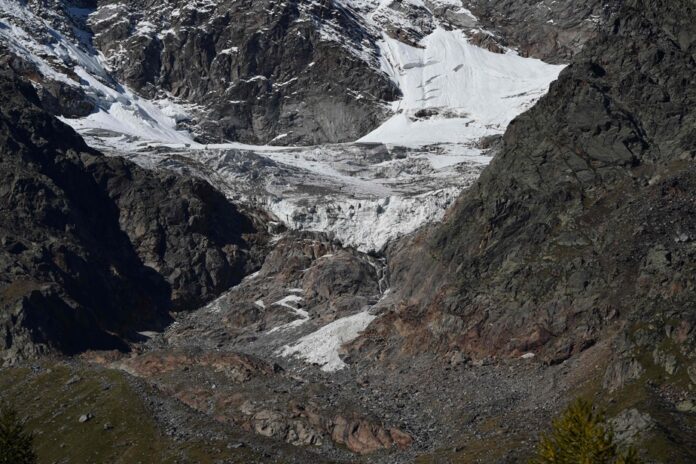(Geneva) Glaciers are melting at a spectacular speed without being able to stop them, warned the UN on Friday, while climate change indicators are breaking records, a trend that is expected to continue until the 2060s.
In its annual report on the state of the global climate, the United Nations World Meteorological Organization (WMO) highlights global changes on land, in the oceans and in the atmosphere, caused by the levels record number of greenhouse gases that trap heat.
The report confirms that the planet’s average temperature in 2022 was 1.15°C warmer than in pre-industrial times (1850-1900) and that the past eight years have been the warmest on record, despite cooling caused by the La Niña weather phenomenon three years in a row.
According to the WMO, “Antarctic sea ice has reached its lowest level on record and the melting of some European glaciers has literally exceeded records”.
And “the game is already lost for the glaciers, because the concentration of CO2 is already very high and sea level rise is likely to continue for thousands of years to come,” said the Secretary General of the WMO, Petteri Taalas.
The melting cannot be stopped “unless we create a way to remove CO2 from the atmosphere,” he said.
The reference glaciers have experienced a much greater loss than the average for the last ten years. The cumulative thickness loss of glaciers since 1970 amounts to nearly 30 m.
The European Alps have broken glacier melt records due to a combination of low winter snowfall, the arrival of Saharan dust in March 2022 and heat waves between May and early September.
The situation of the Swiss glaciers is particularly dramatic.
They lost 6% of their ice volume between 2021 and 2022, compared to a third between 2001 and 2022. For the first time, no snow survived the summer melt season, even at the highest measurement sites , so there was no accumulation of fresh ice.
Sea levels and ocean heat have also reached record highs.
Droughts, floods and heat waves affect large areas of the world and the costs associated with them are constantly increasing.
“Greenhouse gas emissions continue to grow, the climate continues to change, and people around the world are still being hit hard by extreme weather and climate events,” Taalas said.
In a press conference, he pointed out that “this negative trend in weather and all of these metrics is likely to continue well into the 2060s, regardless of our success in mitigating climate change.”
“We have already emitted so much carbon dioxide into the atmosphere that it will take several decades to reverse this negative trend. The game is already lost on melting glaciers and rising sea levels, so that’s bad news,” he said.
But there are still glimmers of hope. Notably, as green energy is becoming cheaper than fossil fuels, according to Taalas, who points out that the planet is no longer heading for a 3-5°C warming as predicted in 2014, but rather for a warming of 2.5 at 3°C.
“In the best case, we could still reach a warming of 1.5°C, which would be the best for the well-being of humanity, the biosphere and the environment. global economy,” he told AFP, pointing out that 32 countries have reduced their greenhouse gas emissions without stopping them from growing economically.
“Countries have started to act,” as well as the private sector, he noted.
On the other hand, he lamented that only half of the 193 UN member states have early warning services.


















